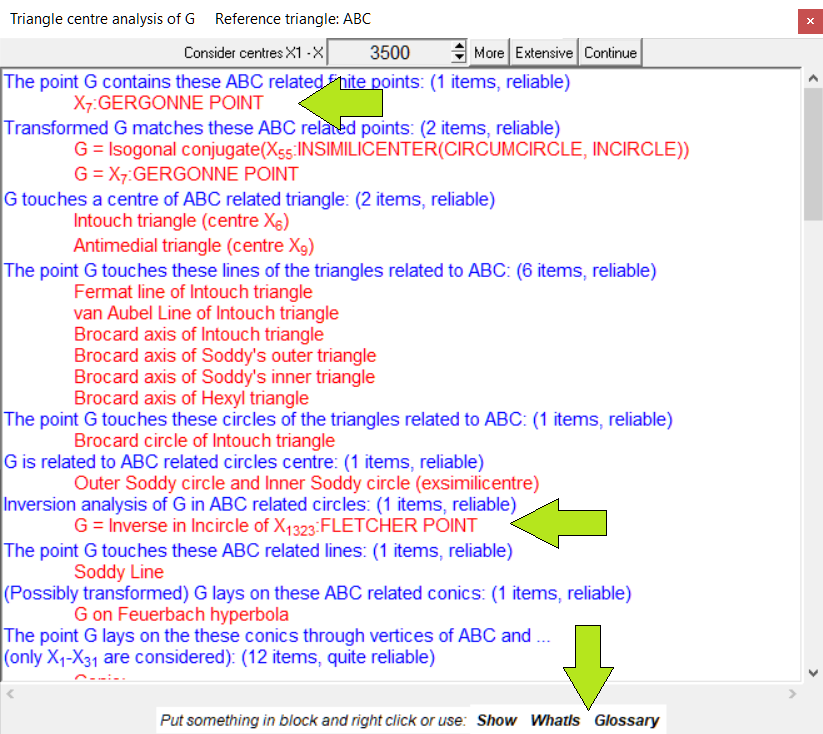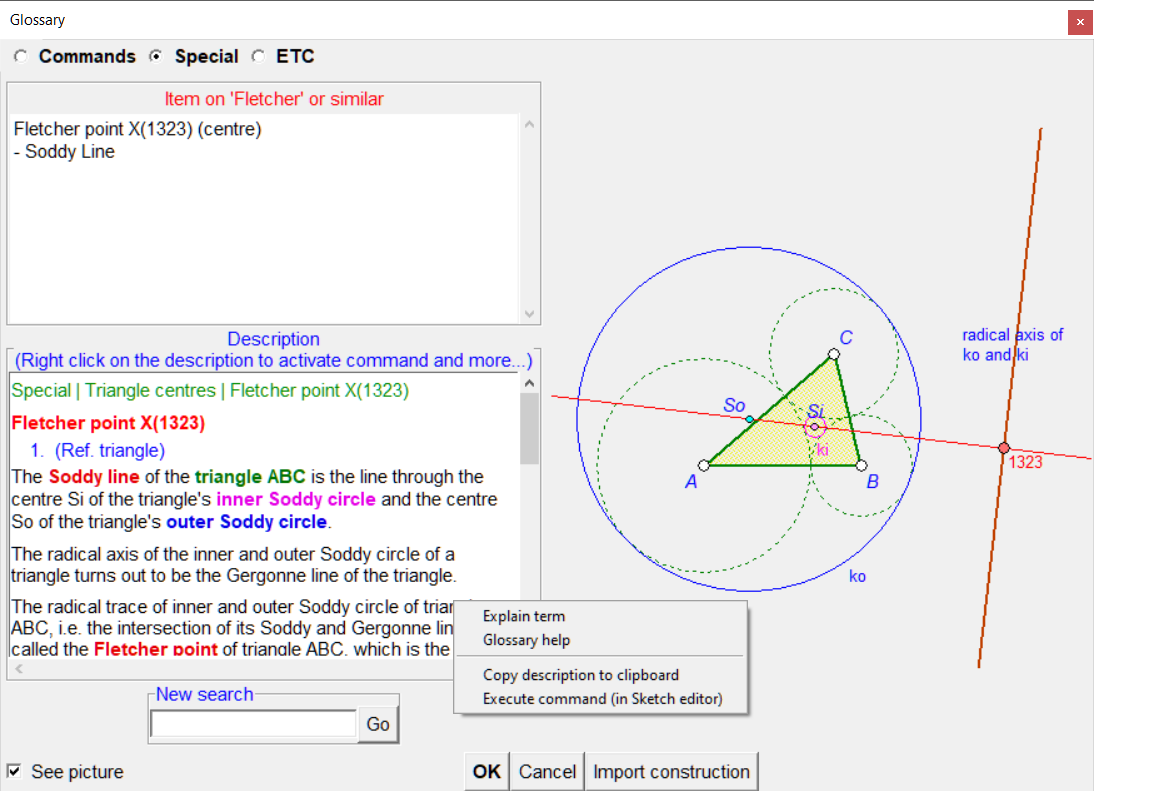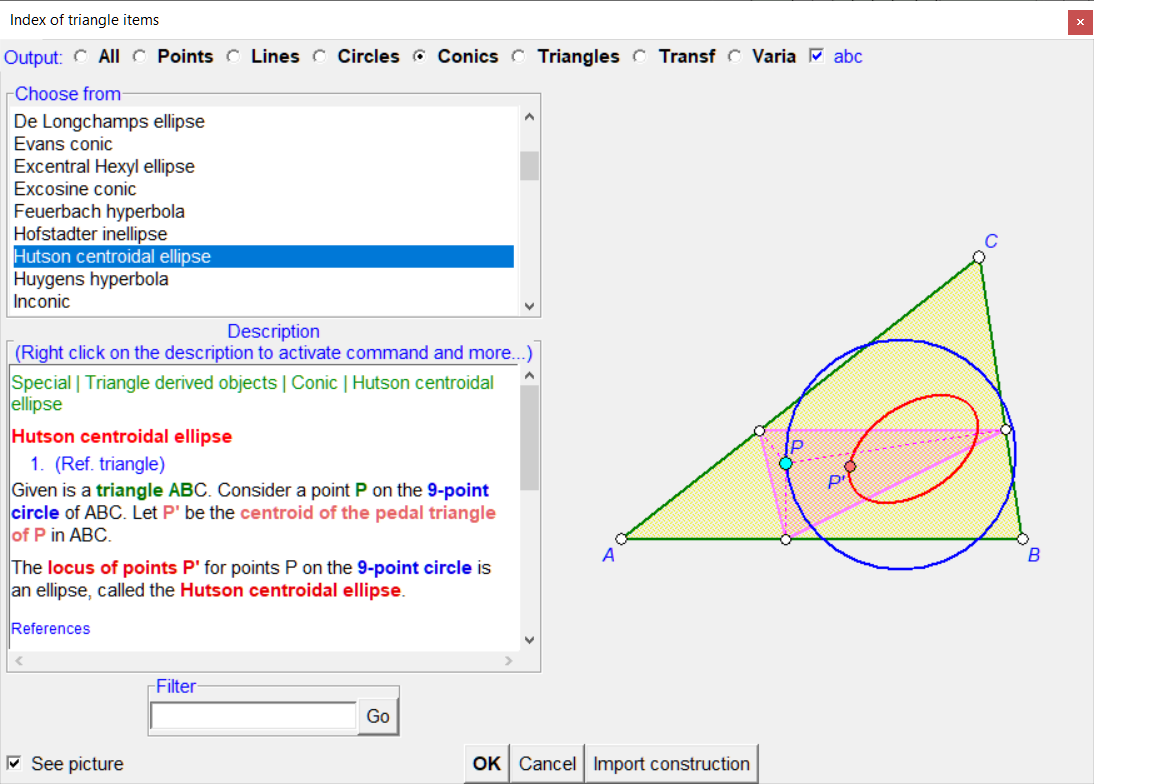Glossary of triangle terms
Get the basic information about triangle objects
OK Geometry Plus includes a module dedicated to triangle geometry. With the appropriate commands, you can create thousands of different triangle centres, hundreds of characteristic triangle lines, circles, conics, cubics, triangles, not to mention dozens of triangle transformations. More importantly, OK Geometry observes whether a constructed object is somehow related to characteristic objects or transformed objects of a triangle. Since it is not easy to keep in mind the multitude of triangle objects and their corresponding definitions, OK Geometry is equipped with a glossary of triangle terms.
In the simple construction on the left, one can observe that the lines AA', BB' and CC' concur at a point G. A triangle analyse of the point G generates a long list of properties of the point G. Obviously, G is the Gergonne point, but you can see that are many different objects are mentioned in the list. For example: G is the inverse in incircle of the Fletcher point.


To get the glossary information on the Fletcher point, simply click on the WhatIs button and then on the term 'Fletcher' with the question mark cursor. If you use the Glossary command (and the spider cursor) instead, you will get a list of items that mention 'Fletcher' either in the name of the term or in its description in the glossary.
Another way to get information about an object is to use the command Help|Glossary (or the F1 key).

The command Help|Triangle commands provides separate lists of all triangle centres, lines, circles, conics, cubics, and transformations included in the glossary.(Figure).
